Limerick is a compact city and is so easy to get around on foot or on the city’s very own TFI Bikes rental service. With so many historic attractions, our self guided tour may be the best and most enjoyable way to explore the city and its fascinating history in your own time.
Flanking the Shannon Estuary on both sides, Limerick is an ancient port steeped in history. From the first Viking settlements in 922 to the development of the English and Irish towns, and the subsequent modernisation of the city during Georgian prosperity, a self-guided walking tour of historic Limerick is sure to enthral.
Starting at (1) Pery Square in Georgian Limerick, Tait Clock (c.1867) is a Gothic Revival clock tower built in honour of Sir Peter Tait, one of the most colourful, flamboyant and entrepreneurial figures ever to have held the office of Mayor of Limerick.
The Limerick Military Memorial, also in Pery Square, is a freestanding cut-limestone memorial, designed in 1960 in memory of those who died in both World Wars: 1914-1918 and 1939-1945.

Developed by the Pery Square Tontine Company and dedicated to Richard Russell, a prominent local businessman, the town park was originally a key-holders only park for residents living in the nearby Georgian houses, the most prominent and influential members of Limerick society of the time. It was not until 20 August 1877 that The Park at Pery Square became the public park known as (2) People’s Park. Compact in size, it is a beautiful example of a town park from this era.
Standing in the middle of the park is a free-standing limestone column erected in 1829, topped with a statue of Thomas Spring Rice (M.P. for the City of Limerick 1820-1832). Other historical items of interest in People's Park include the refurbished ornate drinking fountain, the park kiosk (c.1917), the bandstand erected in 1895, and two gazebos.
Also worthwhile during your visit to the park is the Little Angels - Children’s Remembrance Memorial, unveiled in 2002 in memory of forgotten children and deceased infants universally. On top of the memorial are children’s footprints in bronze.

Adjoining the peaceful People's Park in the heart of Georgian Limerick is the iconic Carnegie building (1903), now home to (3) Limerick City Gallery of Art. Open daily and free to visit and enjoy, among its permanent collection of paintings from the last 300 years are works by Sean Keating and Jack B Yeats.
Some of Ireland's finest examples of Georgian Architecture are in Pery Square, the largest collection of Georgian townhouses in Ireland outside of Dublin.
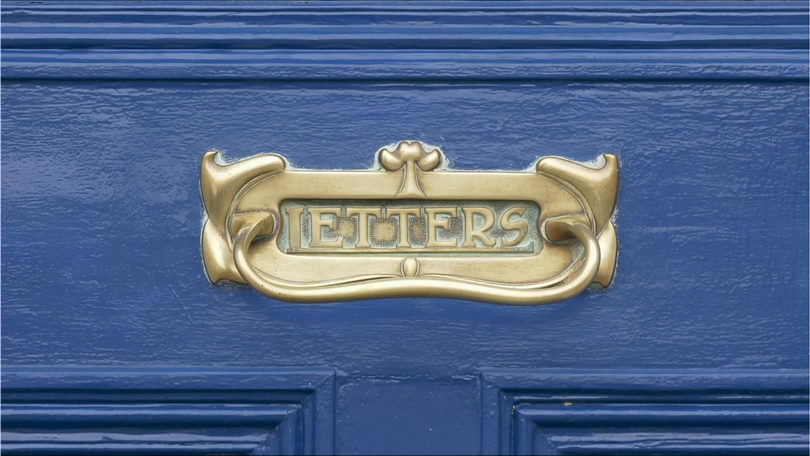
Much of the original street furniture and the external features of houses of the Georgian period still survive in the Newtown Pery area, where the original terraces still stand on long wide and elegant streets in a grid plan design. Ornate balconies, decorative ironwork, door knockers, boot scrapers, capitals in a variety of neoclassical decorative styles on door surrounds (semicircular or elliptical fanlight, depending on the social standing of the houses) are to be seen throughout Georgian Limerick.
Opposite the Limerick City Gallery of Art at No. 2 Pery Square is (4) The People’s Museum of Limerick. The Georgian House, restored by Limerick Civic Trust, is one of a terrace of six houses built c.1830 by the Pery Square Tontine Company. This terrace is widely regarded as being the best example of late Georgian Architecture in Limerick and probably in Ireland. The museum showcases the eclectic and fascinating collection of items in the care of Limerick Civic Trust, as well as artefacts that are visiting from elsewhere.
From the People's Museum continue on Upper Hartstonge Street and on the corner of Pery Square and Hartsonge Street keep an eye out for an original gas lamp standard (c.1840).
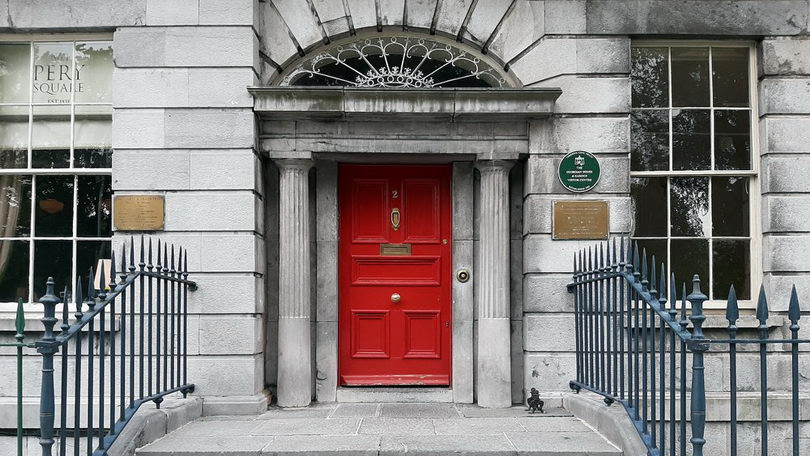
If you continue on and walk the short distance to O’Connell Street and look to your left, you will see the Daniel O’Connell Monument (1857) at The Crescent. This was the first outdoor statue erected to the memory of him.
Turn right on O’Connell Street, walking in the direction of the shopping centre of Limerick, you will pass James Gleeson’s Bar, ‘The White House’, on the corner O’Connell Street and Cecil Street. The facade is an example of a traditional late eighteenth century shopfront.
Just a short walk from The White House is another item of historical interest - the foundation block from the Augustinian Friary at Fish Lane 1633, now situated on O’Connell Street, is built into the wall of the Augustinian Church.
Walk in the direction of Henry Street and Sarsfield Bridge along Bedford Row, and you will come upon a statue of (5) Richard Harris (2007). The famous Limerick actor is depicted in his role as King Arthur in ‘Camelot’.
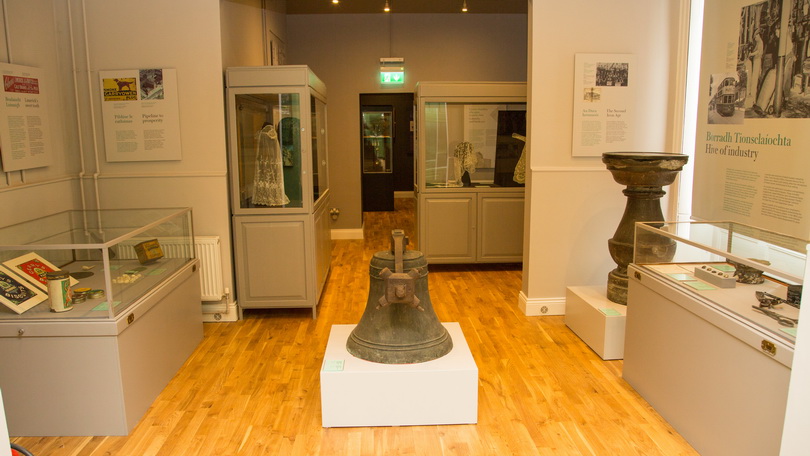
(6) Limerick Museum on Henry Street is certainly worth a visit. With nearly 60,000 objects in its collection telling the story of the city and county. From Stone Age axes to medieval coins, from the civic sword of Queen Elizabeth I to medals presented to veterans of the 1916 Rising. The museum is open weekdays from 10am to 5pm.
Leaving Limerick Museum, continue along Henry Street the short distance to Sarsfield Bridge, passing the Limerick Boat Club (1870) on your way.
On Sarsfield Bridge you will pass the 1916 Memorial.
Cross over the River Shannon on Sarsfield Bridge to Clancy Strand and, walking for five to ten minutes along Clancy Strand, you will come upon the historic (7) Limerick Treaty Stone 1865 - the rock that the Treaty of Limerick was signed in 1691, marking the surrender of the city to William of Orange.
At the Treaty Stone you are a short distance from Thomond Park and (8) Thomond Park Museum, and tours of the hallowed ground including the dressing rooms, dugouts and pitch, as well as its memorabilia-filled museum.
To continue the walking tour of historic Limerick cross the River Shannon over Thomond Bridge in the direction of King John’s Castle where you can explore the early medieval city which was established on the southern tip of King’s Island.
The island is formed by the Abbey and Shannon rivers. Walled in 1185, it became known as English Town and from earliest times was the administrative heart of the city. Those who could not or did not want to embrace the Anglo Norman culture were forced to move to the opposite side of the river. This area, which was not fortified until 1320, was called Irish Town.
It was not until the 1760s that the walls of Limerick were taken down to allow the city to expand south of medieval Limerick, which led to the development of Newtown Pery and the grid system during Georgian prosperity.
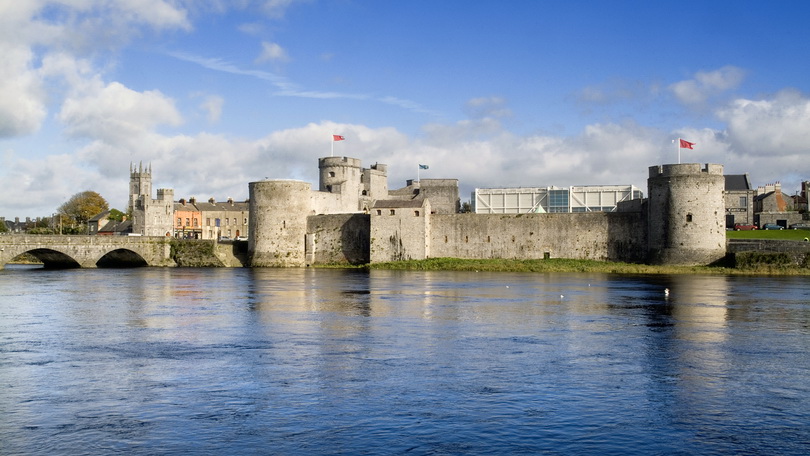
Thomond Bridge (and toll house) is the oldest bridge in Limerick City. Erected about 1185, it has been rebuilt several times over the centuries, and was once the only bridge across the Shannon. The bridge that stands today was completed in 1840, it was designed by the Pain Brothers, who designed many buildings in Limerick during this period, including the County Courthouse, and the Custom House.
As you pass over the bridge you will see The North Munster Masonic Centre on your left. Focusing on the intriguing history and work of the Freemasons, tours can be pre-arranged, allowing visitors entry to the building where existing artefacts and practices are explained.
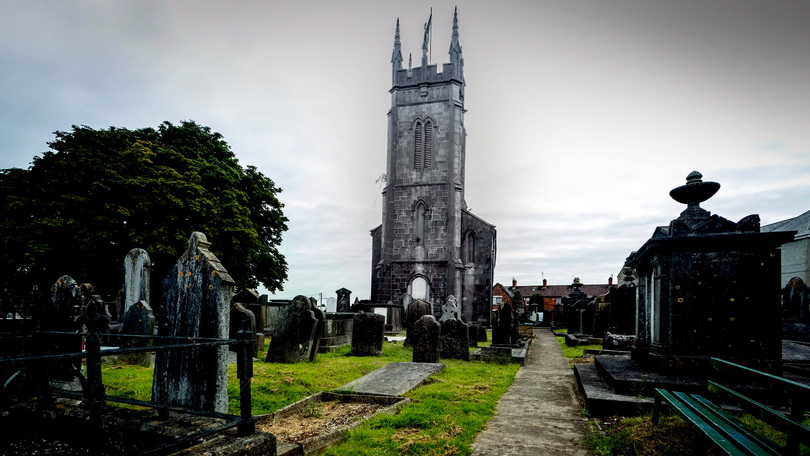
Next stop, (9) Bishop’s Palace (18th-century) on Castle Street, once home to the city's Protestant bishops, and is now the offices of Limerick Civic Trust, a conservation body that offers scheduled walking tours (11am and 2pm weekdays) of the city's heritage sites, and the elegant apartments of the palace itself including The Carol Collection. The Carol Collection is an exhibition of the military memorabilia and family heirlooms collected by five generations of the Carrol Family, offering fascinating insights into the political and social history between the 1700s and 1920s. This is open to the public Monday to Friday.
Located beside the gable end of the Bishops’ Palace is a Horse Trough from the mid 1800’s. Carved out of a single piece of granite, it is the only one of its kind in Limerick. It is a typical example of those provided by the London Metropolitan Drinking Fountain and Cattle Trough Association, established in London in 1859 to provide free public drinking water in the days when horses were the ‘engine’ of road transport.
Also on Church Street is the Gothic style (10) St. Munchin’s Church & Graveyard, built in 1827 (a deconsecrated church).
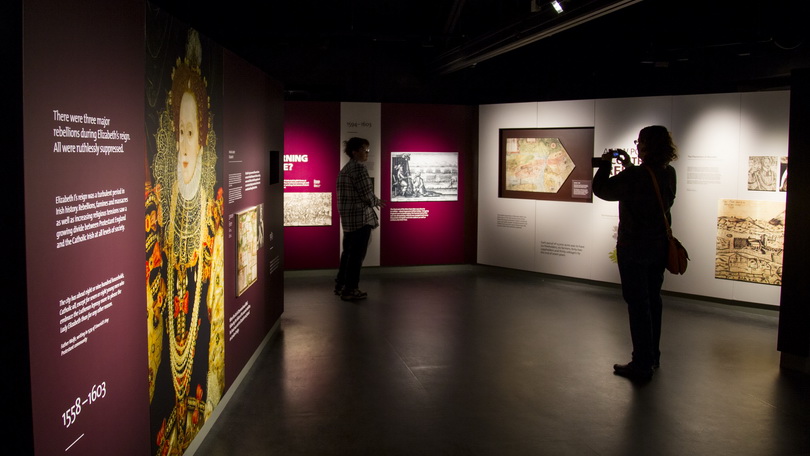
Going back the way you came on Church Street and crossing Castle Street onto The Parade, towards King John’s Castle, you will pass The Bard of Thomond statue on your way. The poet Michael Hogan was born in Thomondgate in 1832. He gave himself the name ‘The Bard of Thomond’ and is best known for his poem The Drunken Thady and the Bishop’s Lady.
The Cannon on The Parade outside King John’s Castle dates from the late seventeenth century.
Open daily all year round visitors of all ages will find something to inspire and excite them at the 13th century (11) King John’s Castle. The balance of history mixed with fun for the children is hugely imaginative. A multimedia experience, providing an excellent history of Limerick is followed by exposed archaeology in the undercroft and a tour of the courtyard and fortifications. Upstairs are the exhibitions on the castle's archaeology and the development of Georgian Limerick.
Beside the castle, just off Nicholas Street, are the (12) Widow’s Alms Houses (1691), originally built to house the widows of soldiers from the Castle. They remain an intact terrace of houses and are part of the history of King John's Castle and Quarter.
At 24 and 25 Nicholas Street you will find (13) Treaty City Brewery Tours which has links to 18th century brewing, once a thriving industry in Limerick’s Medieval Quarter. Number 25 was once the home of Arthur Roche, thrice mayor of Limerick, who operated his own brewery at the rear of the building up until 1756. Open six days a week, tours of 45 minutes run regularly throughout the day.
As you walk along Nicholas Street towards the junction with Mary Street and Bridge Street, you will pass the surviving section of The Exchange on your right. Originally erected in 1673, it was a handsome building with an arcade and covered market on the ground floor and the City Corporation’s Council Chamber on the first floor.
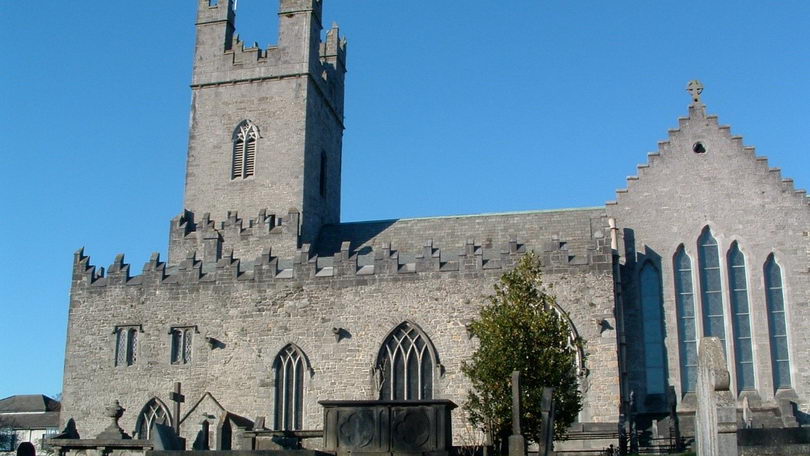
No trip to Limerick is complete without visiting Limerick's ancient (14) St. Mary’s Cathedral on Bridge Street. Open daily this historic building, at the very heart of Medieval Limerick, was founded in 1168 on the site of a palace donated by Donal Mór O'Brien, King of Munster, and remains the oldest building in Limerick still in use for its original purpose. The most prominent features are the East Window (1860) with artwork depicting biblical scenes of healing and succour for the sick, and the West Door, the date for which is not certain, but is the oldest part of the building.
Leaving St. Marys Cathedral and walking along Bridge Street turn left down on George’s Quay for Barringtons’ Hospital, built in 1829 by the Barrington family.
Or continue along Bridge Street over Mathew Bridge which was built in 1844. To your right you will see the Potato Market, an enclosed former market place dating back to 1843.
Passing over Mathew Bridge onto Charlotte Quay, on the corner of Bank Place and Rutland Street, the Spirit Store facade is another example of a traditional late eighteenth century shopfront.

Just across the street is the (15) Hunt Museum on Rutland Street, formally the Custom House, which houses a lifetime accumulation of objets d’arts by John and Gertrude Hunt, who bequeathed their priceless collection to Limerick University in 1978. Open daily the museum highlights include a Syracusan coin claimed to have been one of the 30 pieces of silver paid to Judas for his betrayal of Christ, a Renoir study, a Gauguin painting, a Giacometti drawing and works by Picasso and Jack B Yeats. Free one-hour guided tours from the dedicated and colourful volunteers are available.
Walking along Patrick Street, no 9 and no 11 on the corner of Patrick Street and Ellen Street is a fine example of Victorian architecture from 1872, inspired by Venetian palazzo.
Further along Patrick Street you can turn left onto Denmark Street where you will see St. Michael’s Church which was first opened in 1781 and rebuilt in 1881.
At 19 Upper Denmark Street is Nancy Blake’s traditional pub, a licensed premises since 1778.
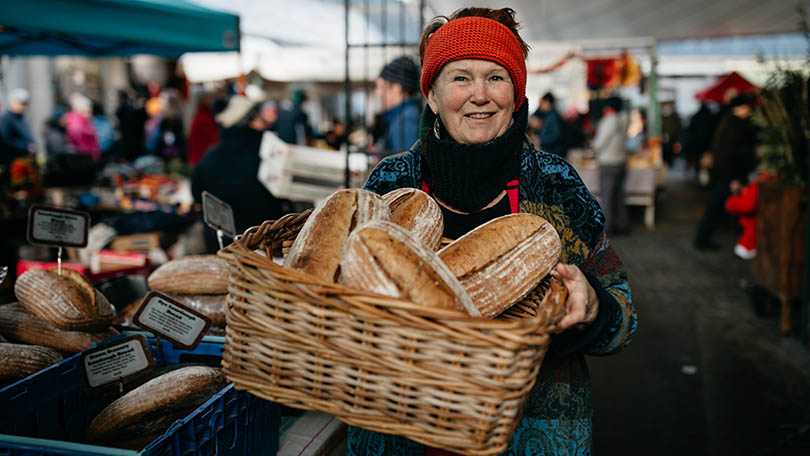
From here walk along Robert Street to (16) Limerick Milk Market, its exact origins unknown. Traditionally, in addition to the sale of fruit and vegetables, there was a lively trade in fowl, homemade butter and homemade breads and cakes. Today the Milk Market is an all-weather, all year round market space, accommodating major markets on Fridays, Saturdays and Sundays, occasional markets at other times, a Food Pavilion and events.
Not far from the Milk Market, just off Old Clare Street, are the Walls of Limerick, remains of the Medieval City Walls built during the 14th Century. In nearby Cathedral Place you will find St. Johns Cathedral (1856) and John Square. The earliest Georgian houses in Limerick are located in John's Square which is in the Irishtown district of Medieval Limerick.
Also in Cathedral Place near John’s Square is the Gothic style Cathedral Drinking Fountain (1865).














